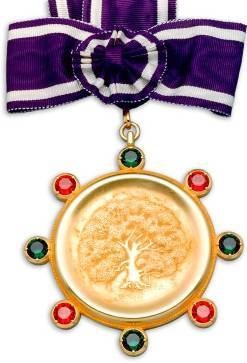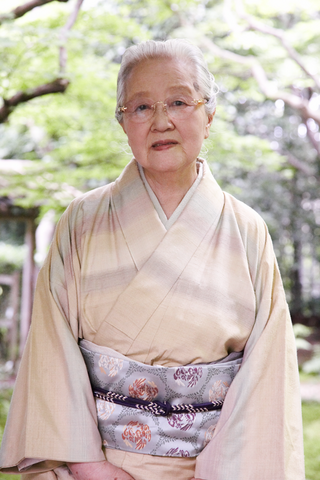
The Kyoto Prize is Japan's highest private award for lifetime achievement in the arts and sciences. It is given not only to those that are top representatives of their own respective fields, but to "those who have contributed significantly to the scientific, cultural, and spiritual betterment of mankind". The Kyoto Prize was created in collaboration with the Nobel Foundation and is regarded by many as Japan's version of the Nobel Prize, representing one of the most prestigious awards available in fields that are not traditionally honored with a Nobel.
The Rolf Schock Prizes were established and endowed by bequest of philosopher and artist Rolf Schock (1933–1986). The prizes were first awarded in Stockholm, Sweden, in 1993 and, since 2005, are awarded every three years. Each recipient currently receives SEK 400,000. A similar prize is the Kyoto Prize in Arts and Philosophy, established by the Inamori Foundation. It is considered the equivalent of the Nobel Prize in Philosophy.

Charles Margrave Taylor is a Canadian philosopher from Montreal, Quebec, and professor emeritus at McGill University best known for his contributions to political philosophy, the philosophy of social science, the history of philosophy, and intellectual history. His work has earned him the Kyoto Prize, the Templeton Prize, the Berggruen Prize for Philosophy, and the John W. Kluge Prize.

Alfred George Knudson, Jr. was an American physician and geneticist specializing in cancer genetics. Among his many contributions to the field was the formulation of the Knudson hypothesis in 1971, which explains the effects of mutation on carcinogenesis.

Kazuo Inamori, was a Japanese philanthropist, entrepreneur and the founder of Kyocera and KDDI. He was the chairman of Japan Airlines.
Simon Asher Levin is an American ecologist and the James S. McDonnell Distinguished University Professor in Ecology and Evolutionary Biology and the director of the Center for BioComplexity at Princeton University. He specializes in using mathematical modeling and empirical studies in the understanding of macroscopic patterns of ecosystems and biological diversities.

George William Gray was a Professor of Organic Chemistry at the University of Hull who was instrumental in developing the long-lasting materials which made liquid crystal displays possible. He created and systematically developed liquid crystal materials science, and established a method of practical molecular design. Gray was recipient of the 1995 Kyoto Prize in Advanced Technology.

Isamu Akasaki was a Japanese engineer and physicist, specializing in the field of semiconductor technology and Nobel Prize laureate, best known for inventing the bright gallium nitride (GaN) p-n junction blue LED in 1989 and subsequently the high-brightness GaN blue LED as well.

Takeo Kanade is a Japanese computer scientist and one of the world's foremost researchers in computer vision. He is U.A. and Helen Whitaker Professor at Carnegie Mellon School of Computer Science. He has approximately 300 peer-reviewed academic publications and holds around 20 patents.

Karl Alexander Deisseroth is an American scientist. He is the D.H. Chen Professor of Bioengineering and of psychiatry and behavioral sciences at Stanford University.

The Kyoto Prize in Advanced Technology is awarded once a year by the Inamori Foundation. The Prize is one of three Kyoto Prize categories; the others are the Kyoto Prize in Basic Sciences and the Kyoto Prize in Arts and Philosophy. The first Kyoto Prize in Advanced Technology was awarded to Rudolf E. Kálmán, the "creator of modern control and system theory". The Prize is widely regarded as the most prestigious award available in fields which are traditionally not honored with a Nobel Prize.

William David Kingery was an American material scientist who developed systematic methods for the study of ceramics. For his work, he was awarded the Kyoto Prize in 1999.

Tasuku Honjo is a Japanese physician-scientist and immunologist. He won the 2018 Nobel Prize in Physiology or Medicine and is best known for his identification of programmed cell death protein 1 (PD-1). He is also known for his molecular identification of cytokines: IL-4 and IL-5, as well as the discovery of activation-induced cytidine deaminase (AID) that is essential for class switch recombination and somatic hypermutation.
Morton B. Panish is an American physical chemist who, with Izuo Hayashi, developed a room-temperature continuous wave semiconductor laser in 1970. For this achievement he shared the Kyoto Prize in Advanced Technology in 2001.

The Kyoto Prize in Basic Sciences is awarded once a year by the Inamori Foundation. The Prize is one of three Kyoto Prize categories; the others are the Kyoto Prize in Advanced Technology and the Kyoto Prize in Arts and Philosophy. The first Kyoto Prize in Basic Sciences was awarded to Claude Elwood Shannon, the “Establishment of Mathematical Foundation of Information Theory”. The Prize is widely regarded as the most prestigious award available in fields which are traditionally not honored with a Nobel Prize.

Fukumi Shimura is a Japanese textile artist who has created kimono since 1958. Shimura was awarded multiple honours including the Living National Treasure in 1990 and the 2014 Kyoto Prize in Arts and Philosophy.







































